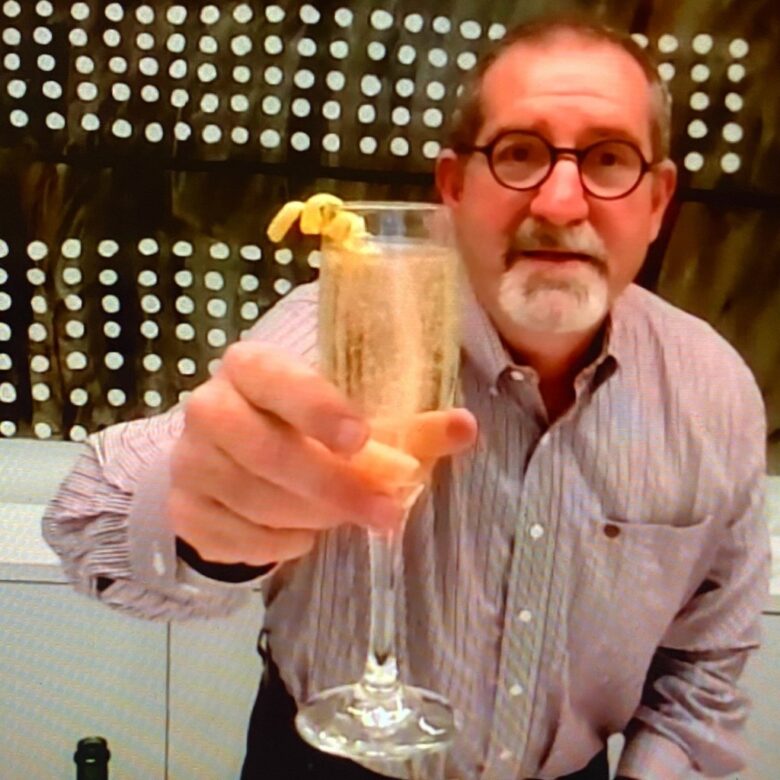I started tinkering around with cocktails the summer of 2019, on a search for the best cocktail of the summer. Mostly to give myself something to do. Summer turned into fall, and fall into winter, then in 2020 I decided that I had made enough cocktails that I need to keep them someplace or I would forget them. So, I started an Instagram blog @architecture_of_the_cocktail as an online filing cabinet for drinks I had made, including pictures, history, and my comments. I started out making one unique cocktail a week. Then the pandemic hit, and it became two a week, then three, then I threw in the towel and started a goal with no finish line in sight of making a different cocktail each day. It started off loose, and fell into a formula; ingredients, then method, then my notes/comments, then any historical info I could find – all within the max wordcount of Instagram. As I crossed my 300th cocktail on Instagram today, I was urged by a friend to put together a top 10 list. MY top 10 list. I was reluctant at first, but then I realized I have not revisited most of the cocktails on my list and thought it would be a good exercise to look back to where I started and where I have been.
The list below represents my 10 (Well, make it a dozen. It’s my list) favorite cocktails. Interestingly enough, they are all over the place. Some are the earliest on record, some are contemporary classics. Some are historically accurate to the letter, some are riffs on classics. This was not intentional, but most spirits and different types of drinks are included. This actually reflects my personality pretty well. I have found there are two types of cocktail drinkers. The first, and much larger group, represent drinkers with a very small (sometimes only one) drink they want. The only Old Fashioned or Margarita group. Nothing wrong with that. I believe the best cocktail is the one in your hand that you love. Others (like me) are cocktail sojourners, happy to take a risk on a tipple that they may not like in an effort to explore. But there is no way I can compare a Queen Park Swizzle to a Corpse Reviver to a Martini, and so – in no particular order other than the order I made them (newest to oldest) – here we go!

- Fitty-Fitty Martini (Martini)
I have two types of liquor in the house. I have developed a series of ‘house’ liquors (Beefeaters Gin, Woodford Reserve Bourbon, Hennessy VS Cognac, Rittenhouse 100 rye, Glenbar 12 year Single Malt Scotch, Costco Vodka – because it should be odorless and flavorless – and Bacardi white rum). These are all well-made, utilitarian spirits that won’t cost an arm and a leg. Then I have a series of spirits that are specific to an era or a drink. Aged Rhum Agricole, Laphroaig Islay Whisky, or an Old Tom gin. These have different flavor profiles that are specific and raise the bar (no pun intended). The Tanqueray 10 is in that second category. In a drink that only has two ingredients, quality really matters. Otherwise, there are a hundred martinis out there that will provide cover for a lesser spirit. Is the Tanqueray 10 the only gin for this martini? Absolutely not, but as much as I like Beefeaters – it’s not up to the task. And for that you get a wonderfully elegant and minimalistic martini. It is simple and uncomplicated, and a beautiful thing to drink.
.
The fifty-fifty martini ratio (half gin and half dry vermouth) has been around a long time – the late 1800s somewhere. Gordon’s Gin actually sold a bottled fifty-fifty martini back in 1924. This version was created at the Pegu Club by the amazing Audrey Saunders, in 2005. Her take uses one dash of Fee Brothers orange bitters and one dash of Regan’s orange bitters. The Pegu Club was one of the most innovative craft cocktail bars in New York City, headed by owner and bartender Saunders. Sadly, the Pegu Club closed last April. Another casualty of COVID virus in New York. F’ing virus.
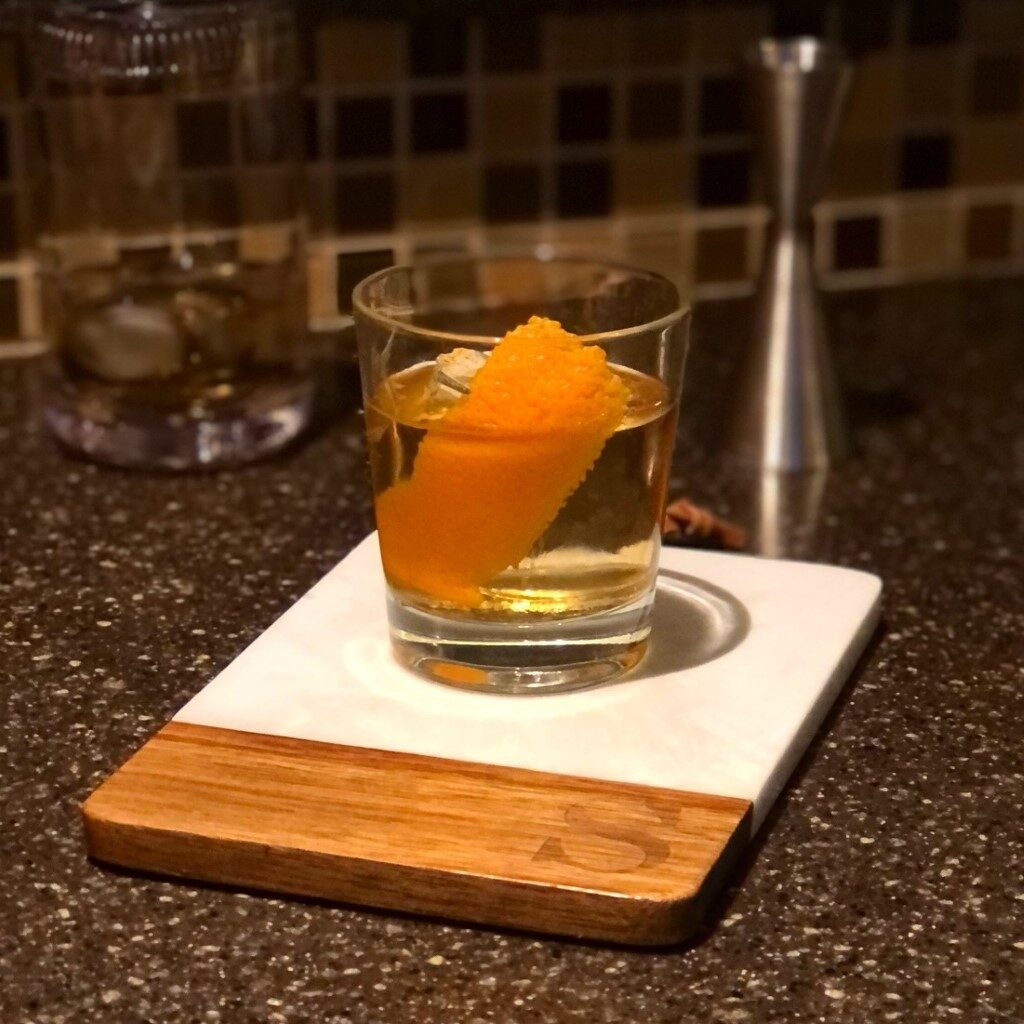
- The Oaxaca Old Fashioned (Cocktail)
This was surprisingly great – if you like tequila/mezcal. I made it with Bittermens xocolatl mole bitters as well and thought I would like that better. Good, but the Angostura bitters were superior. It is boozy (it is an Old Fashioned riff, after all), but the agave nectar balances the mezcal nicely. Regardless, a great and surprisingly smooth cocktail. This drink, from the cocktail savant Phil Ward, is really good – deserving of its place in the top shelf of contemporary classic cocktails, and a great way to explore a different direction during Old Fashioned Week.
This cocktail was created by the legendary barman Phil Ward while he was at Death & Co. in 2007. There have been a million variations of the Old Fashioned. We typically think of the Old Fashioned as a bourbon or rye cocktail – but in the early 1800s when it became a staple in most bars and saloons, it was simply called a Whiskey Cocktail, to separate it from a Brandy Cocktail, or a Sherry Cocktail. The ‘Cocktail’ part told the bartender that you wanted a little sugar, water (later ice), and bitters. It has been riffed on for 150 years, but until the 2007, no one really made a case for the addition of mezcal. That is why the drink by Ward – a mezcal lover – made it an instant classic. Virtually overnight it made its way onto bar menus across the globe.
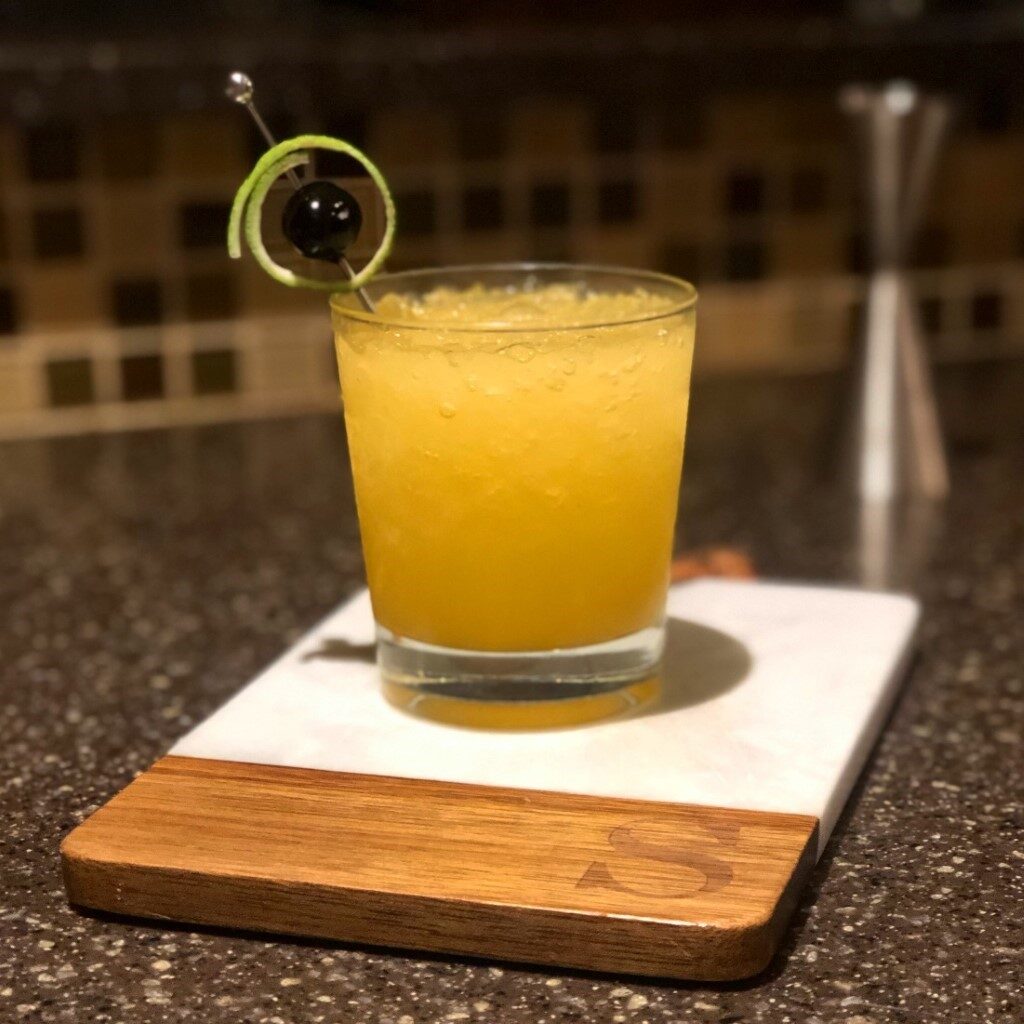
- The Saturn (Tiki)
Damn. Surprisingly good gin-based tiki cocktails – some say it’s the best gin based Tiki cocktail out there. The gin provides the base for the drink, but the passion fruit and spices of the Falernum are the stars. Just enough citrus to makes it refreshing. Really great – and one of the best garnishes out there. I could get used to these.
The drink was created in 1967 by California bartender J. ‘Popo’ Galsini, who won the International Bartender’s Association World Championship with the drink. Galsini is considered one of the best Tiki bartenders of the 50s and 60s and was developing the drink under the working name X-15, the hypersonic rocket-powered aircraft operated by the United States Air Force. The Kona Kai in Huntington Beach was a regular watering hole for the engineers at Douglas Aircraft, designers of the plane. In October of 1969, right after Galsini released the drink, an X-15 crashed, killing pilot Michael Adams. Out of respect, Galsini renamed the drink the Saturn Cocktail, and entered it in the IBA World Championship under that name.
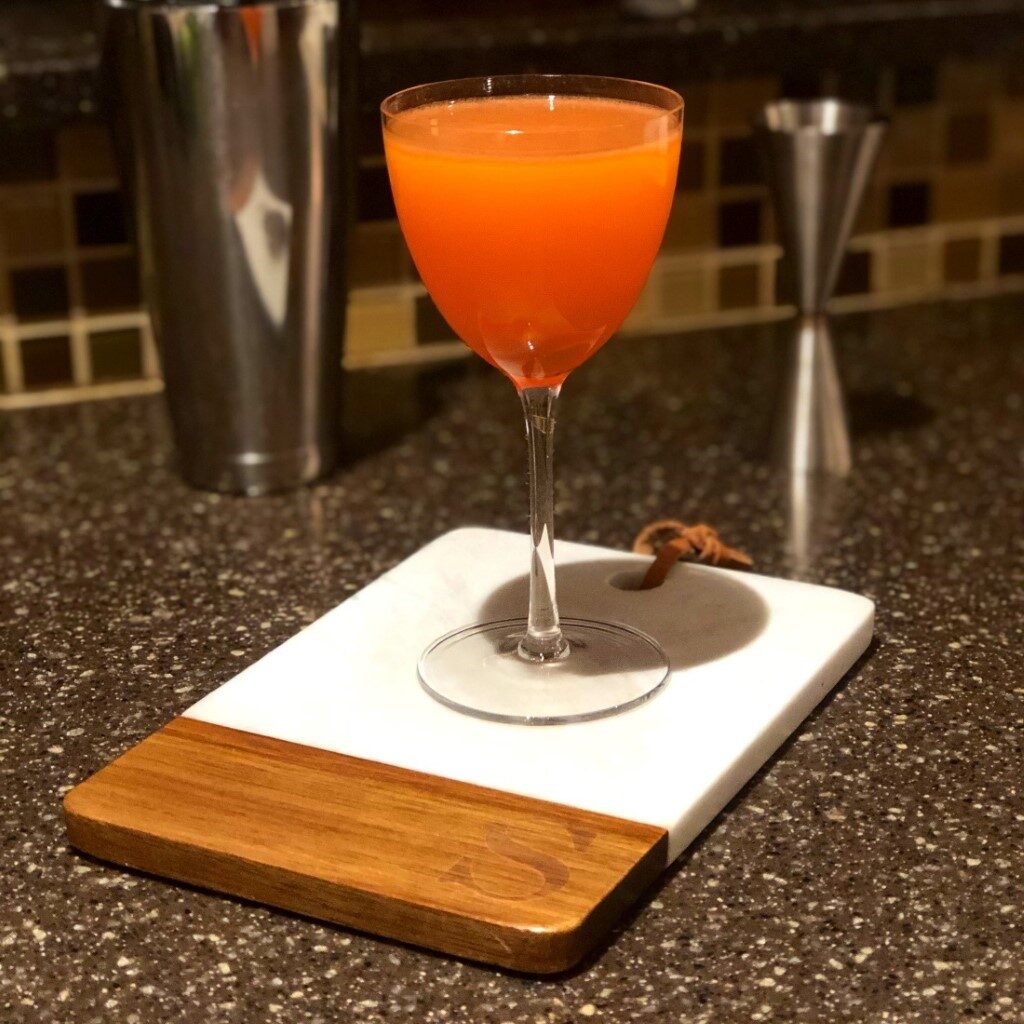
- Naked and Famous (Cocktail)
I found this drink while researching the list of international Bartenders Association (IBA) official cocktails recently. I am not really that familiar with a lot of contemporary drinks, as most of my research has been in the area of Prohibition and pre-Prohibition cocktails, but I had everything on hand and decided to make one up. But do a quick Google search, and you find it everywhere. So many of the hot drinks on the modern scene tend to be riffs on the classics, and the Naked and Famous falls in this category as well – but man was I in for a surprise. Rather than a nuanced play on an older drink, this uses some familiar spirits and takes it in a really different direction. First, the color is stunning, and the four ingredients in equal measure all maintain their base essence, while combining to make the sum greater than the whole. It is herbal, grapefruit-bitter, sour, and smokey all at once. Really marvelous. I can see drinking this regularly all summer.
The Naked and Famous is a contemporary cocktail that I had not heard of until just recently. But I have heard of Death & Co., one of the hubs of current mixology creation in the East Village of Manhattan. Joaquín Simó created the drink in 2011 while working there and calls the cocktail “the bastard love child of a classic Last Word and Paper Plane [created by Sam Ross], conceived in the mountains of Oaxaca.” Simó suggests that with so little mezcal, you should reach for a bottle with a big dose of smokiness. I used Del Maguey Chichicapa Mezcal, because I had it, and it was lovely. You probably don’t have a bottle of Yellow Chartreuse on hand, but this is one drink that may convince you to buy one.
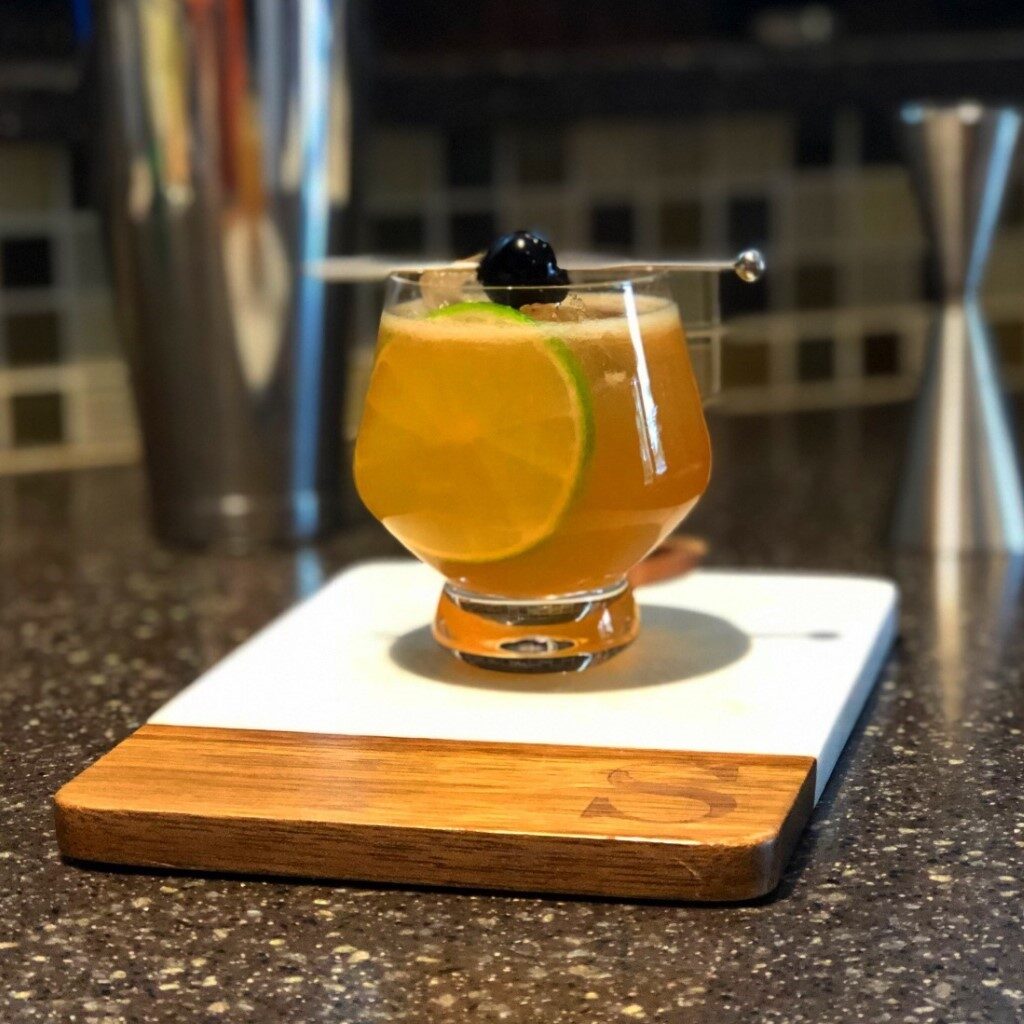
- Philadelphia Fish House Punch (Punch)
I love a great story even if the drink is average. More than I like a good drink with a weak or no story. But sometimes you find yourself on the top shelf with a great drink that has an amazing story. This is one of those rare top shelf drinks. This is an old drink, back before God and Americans created the cocktail itself. Back when huge parties consisted of one drink – the punch – that had been labored over all day. Women in expensive dresses and men in shirts with ruffles danced the night away while the common laborer sat home and drank ale that you finished with a fork. This is a punch bowl drink, reduced down to a single serving. Once this pandemic is over, I am making a gigantic punch bowl of this and everyone is invited.
The Philadelphia Fish House Punch is as American as it gets. This was created at a pre-revolutionary social club – the Schuylkill Fishing Company of Pennsylvania, also known as the State in Schuylkil. A bunch of rebellious upper crust Philadelphians claimed an island outside the city a sovereign state and called themselves citizens (they still do). This was the drink that was prepared while they spent the day fishing (drinking) and consumed in the evening at a large party. The group still meets several times a year. Cocktail historians Paul Harrington and Laura Moorhead trace this cocktail recipe back to 1732, and it was included in the bartender’s bible, Jerry Thomas’s 1862 “How to Mix Drinks, or the Bon Vivant’s Companion”.
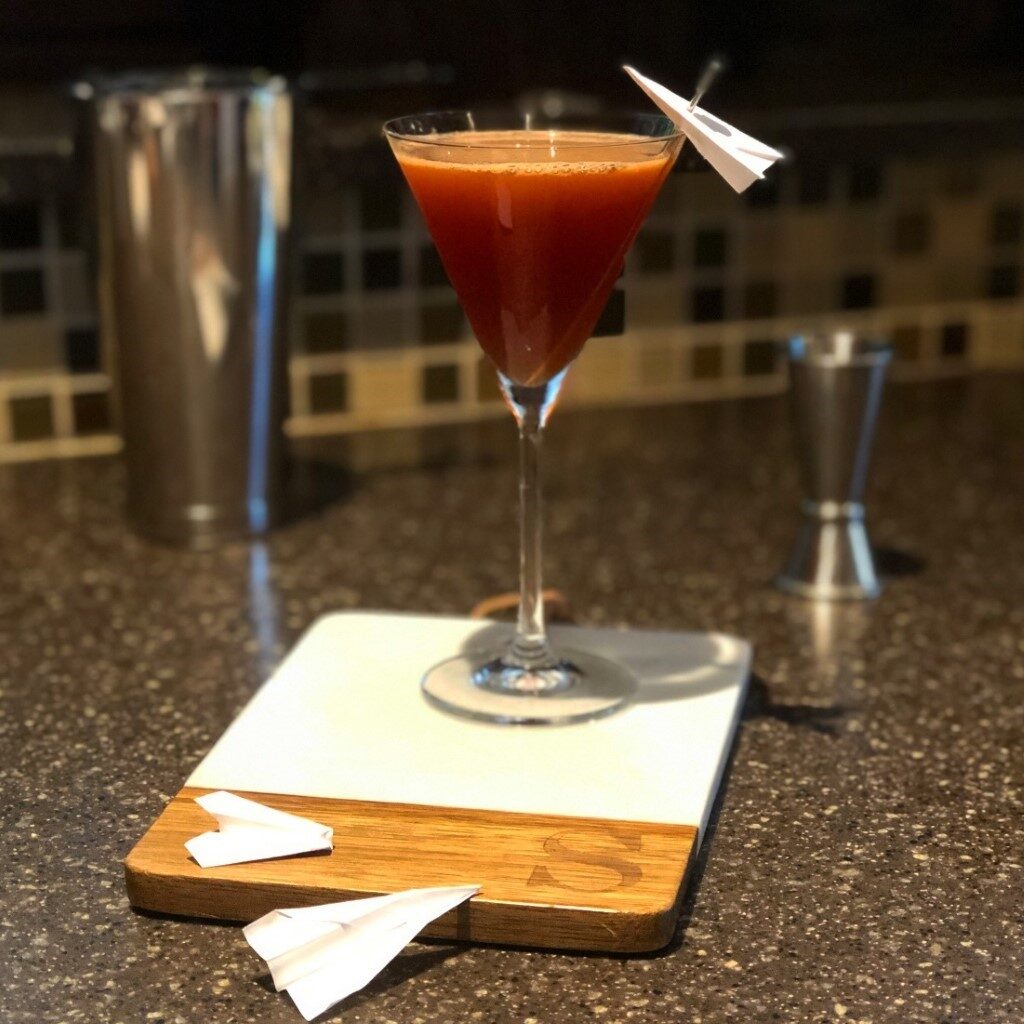
- Paper Plane (Cocktail)
Full disclosure, I didn’t have any Nonino Quintessentia. I substituted Ramazzotti Amaro, so it is a little darker and probably not exactly the correct flavor profile. I checked online and this was the recommended substitution. The Nonino is a little lighter and sweeter with a slight vanilla taste, while the Ramazzotti has a slightly bitter blood orange flavor profile. If you are looking for an Amaro and don’t know where to start, Ramazzotti is my recommendation. It is lovely as an after dinner (or before dinner) drink either warm or with an ice cube. It is a digestif, so I tell myself it will help with that heavy meal I just had. Regardless, this drink was lovely, and makes me think I may need to save up for the $65 Nonino to try it again. It is really balanced between the sweet, sour, bitter, and herbal flavor profiles. Steve the Bartender (one of my favorite cocktail and YouTube blogs – check him out) uses Amaro Montenegro as a substitute, so I may try this as well.
.
The Paper Plane was created by Sam Ross in 2007, at the Violet Hour in Chicago. Ross also gave us the Penicillin Cocktail (AotC-084). It was supposedly inspired by M.I.A.s hit “Paper Plane”, released that same year, and was blasting on repeat the year he created the drink.
Note: Sometime after I posted this I finally broke down and purchased a bottle of Amaro Nonino Quintessentia – and the drink is better. FAR better. The color is better, and the taste is better. There is a good reason this is a Contemporary Classic Cocktail.

- The Bijou (Cocktail)
I’m not going to lie. This was right up my alley. Really brilliant drink. The combination of flavors is wonderful. But you must like Green Chartreuse. I bought a mini-bottle a year and a half ago on a whim but was not sure about the taste when I tried it. As they say on their website – “It is powerful and unique”. But it has really grown on me, and I ended up buying a bottle (and its sister Yellow Chartreuse as well). It has a taste profile that is really, really different. Created in 1737 by the Carthusian Monks in France, there are currently only two monks who know the identity of the 130 plants, proportions, and how to make Green Chartreuse. It is very herbal, and was created as a digestif, or after-dinner drink, to help with digestion. But it is kind of expensive and not really in very many drinks, so don’t expect to order this at your neighborhood haunt. The Plymouth Gin has a bit of sweetness to it and adds greatly to the cocktail. But you won’t find that at the corner bar either. If you like gin and haven’t tried Plymouth – then you can’t say you really know gin.
The Bijou Cocktail was created by the amazing mixologist Harry Johnson, the “father of professional bartending”. It was named the Bijou for the colors of the three jewels: gin for diamond, vermouth for ruby, and chartreuse for emerald. Johnson includes it in his 1900 “New and Improved Bartending Manuel”, but it dates from the early 1890s.
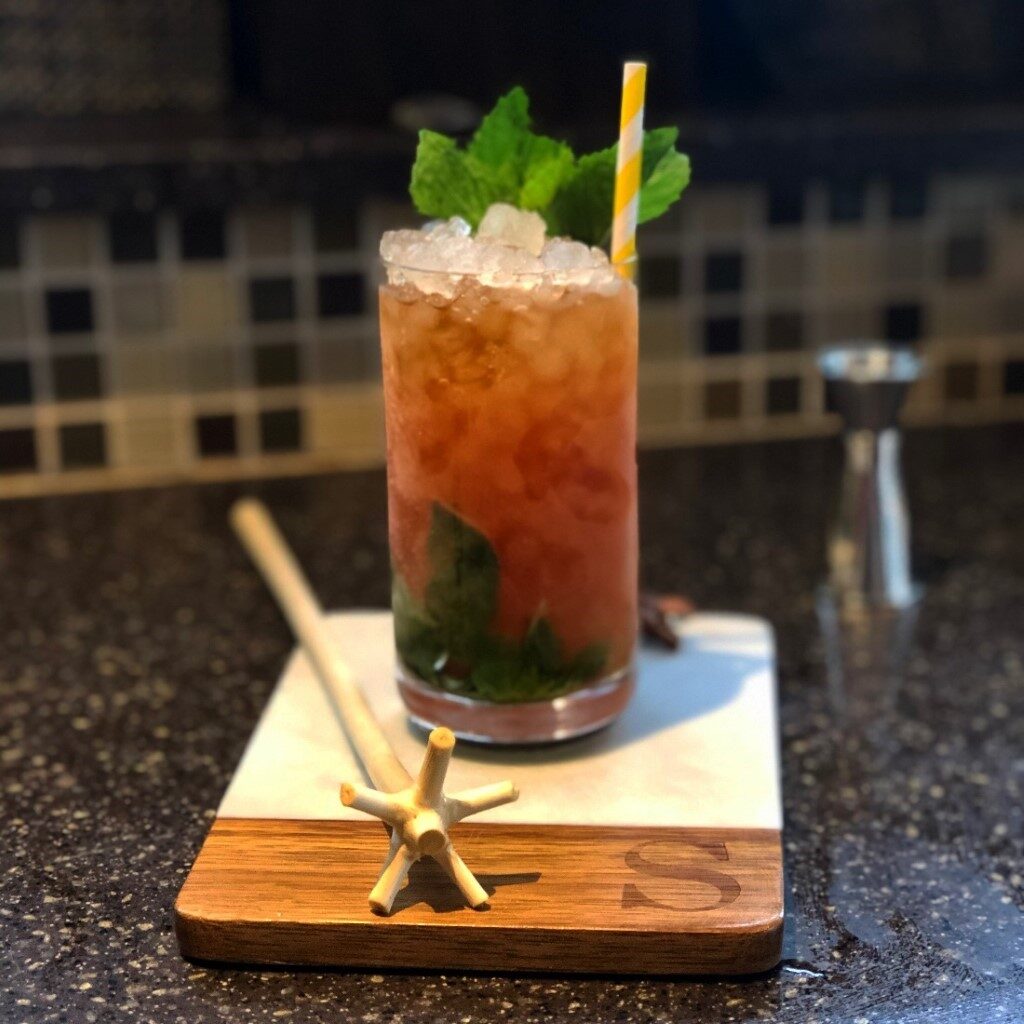
- Queen Park Swizzle (Swizzle)
Man, oh man. Some cocktails need to be sipped because they are strong and powerful. This one. This one is a delight. It sounds complicated, but it’s not. Think of it as a more refined, better tasting mojito.
The Queen Park Swizzle dates from 1920 but was likely around much longer. Well before all-inclusive hotels, there were grand hotel resorts in the Caribbean. The Queen Park in Trinidad was the grandest of them all. And this was their signature cocktail.
Swizzles use a Le Bois Lélé (swizzle stick) from the Quararibea turbinata tree to mix the ingredients in the glass. The stick (you can use a tall bar spoon as well) mixes, aerates, and cools the drink very quickly. It’s a cool party trick too. And let’s be honest. Presentation has a serious role in cocktails.
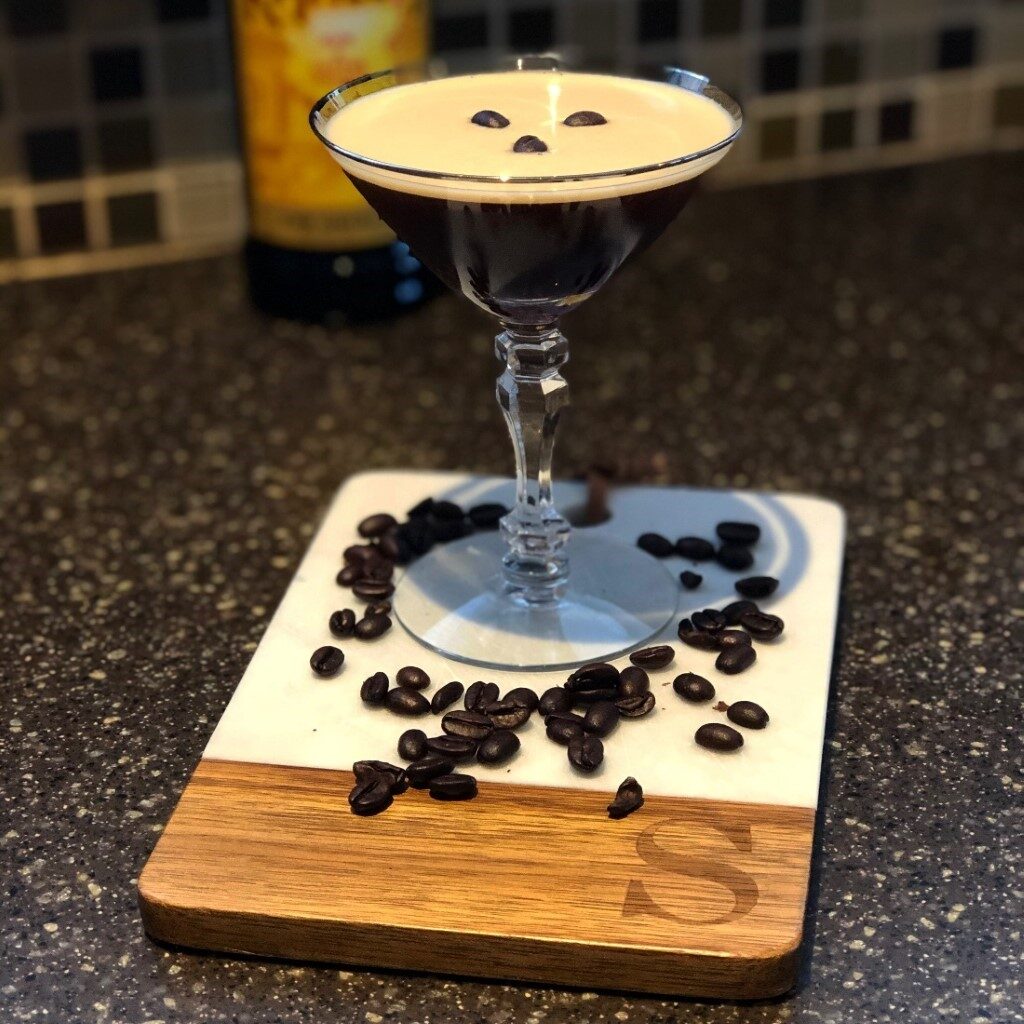
- Espresso Martini (Mixed Drink)
This is the first Espresso Martini I have had, and I have to say, it is delicious. Well balanced and complex. It is understandable that it is considered a Contemporary Classic. The drink calls for 1oz of hot espresso, but I don’t have a machine. I did a lot of research and found you can make an espresso in a French press. I was all set up to do that, then realized I could just pick up a double espresso at the coffee shop drive-thru on the way home from work. Easy!
The Espresso Martini was created by Dick Bradsell, who is also credited with creating the Bramble, the Treacle, and the Green Fairy. Legend has it that a well-known actress (Kate Moss) came into the London Soho Brasserie in 1983 and asked Bradsell to whip up something that would “wake me up, and fuck me up”. He originally called it the Vodka Espresso, but being in the 1980’s in the middle of the martini craze (where everything in the classic piece of stemware was called a ‘something’ Martini), he jumped on the bandwagon, and started serving it in a martini glass and renamed it the Espresso Martini. And it took off.
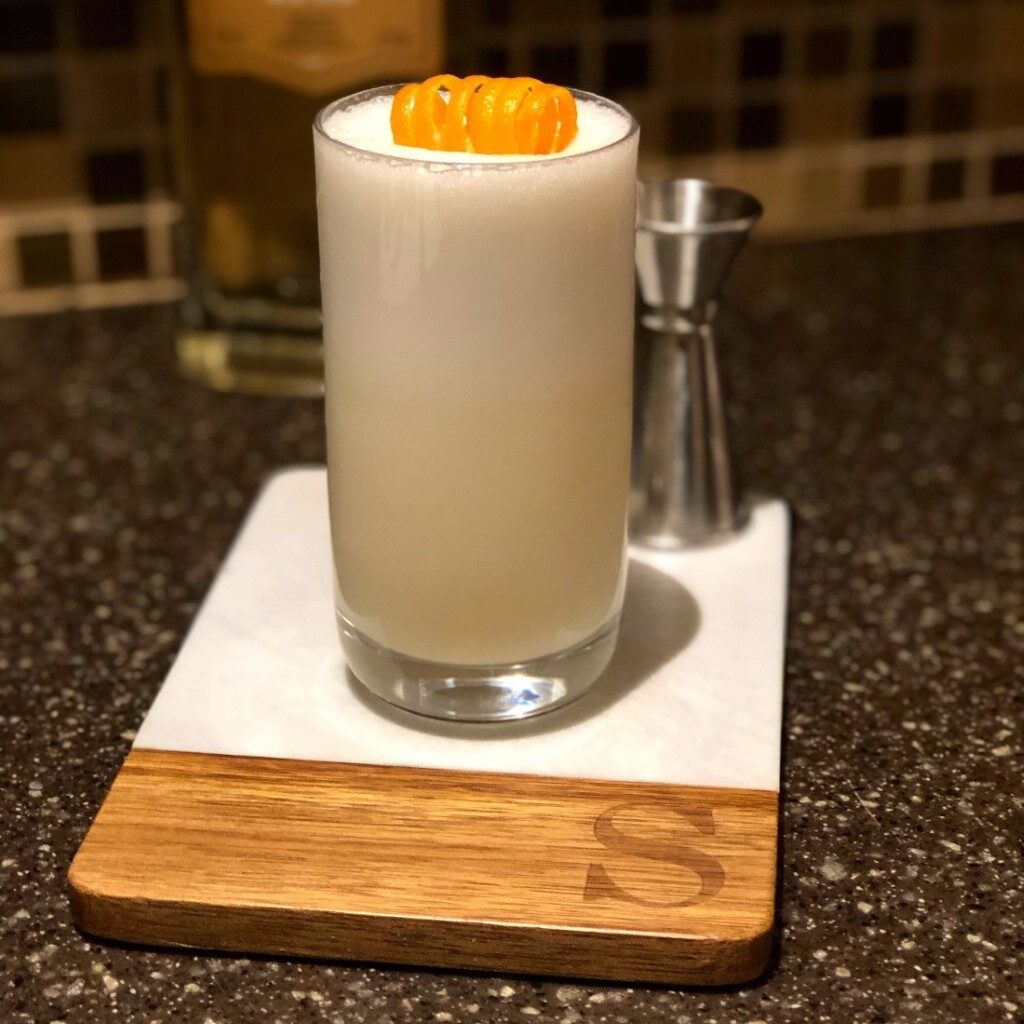
- Ramos Gin Fizz (Fizz)
This cocktail is simply amazing. Sublime. Perfect balance between liquid and foam, between sweet and sour. Very light and delicate. But man, is it hard to make. Imagine making whipped cream by hand by shaking it in a mason jar. But worth it.
This is the drink most bartenders will hate you for ordering – if they will even make it. Henry C. Ramos created the drink in 1888 in his bar, the Imperial Cabinet Saloon, on Gravier Street in New Orleans. It was simply called the New Orleans Fizz at first, and it changed the cocktail scene forever. It became so popular it took on its creators’ name. The drink was an enormous success and prior to Prohibition Ramos employed 20 ‘shakers’ to shake the cocktail for 12 minutes each. Try it for 2 minutes and imagine doing it for 12 – over and over. In 1915 during Mardi Gras, 32 staff members were employed simply to shake. The staff ‘nearly shook their arms off’ and still couldn’t keep up. The Roosevelt Hotel in New Orleans trademarked the name in 1935 and still serves it today – which is where I had it in New Orleans. Louisiana Senator Huey Long brought one of the Roosevelt’s bartenders with him to New York when he went there to always have easy access to one.
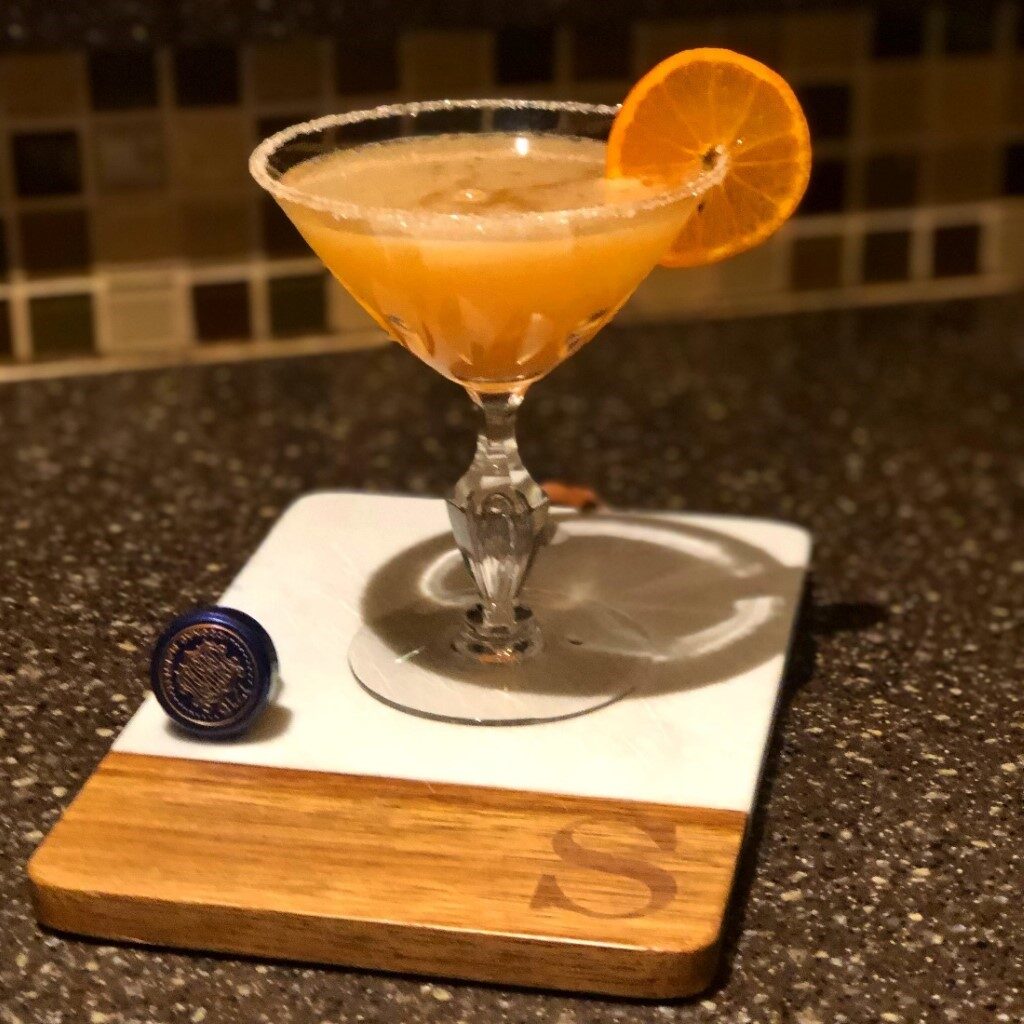
- Sidecar (Cocktail)
The Sidecar was arguably the most popular cocktail during prohibition. But its roots go way back to the Brandy Crusta (AotC-52). It is thought that the Sidecar is a simplification of that brandy-based drink, but its exact origin is, of course, murky. It is pretty well accepted that it was created in London or Paris around the end of WWI – either created at Harry’s New York Bar in Paris or in Buck’s Club in London, but the story after that is the same. A US Army captain would travel to the bar in the sidecar of a friend’s motorcycle and wanted something to warm him up before dinner. Since brandy is an after-dinner drink, the Brandy Crusta became the inspiration.
The drink proportions are different based on the origin story you believe. The English version contains 2 parts Brandy, 1 part Cointreau, and 1 part lemon juice. The French version has equal parts of all three (the version above). The great thing about the Sidecar is that you can change the drink to your personal taste. Too boozy, reduce the cognac. Less sweet, sour, or less orange – change the proportion. The biggest change that is fully embraced is the use of cognac rather than the original brandy. Cognac is the preferred spirit, because there is less variability in the flavor profile than brandy. And honestly, this cocktail was a fitting end to my bottle of Martell VSOP cognac.
One last side story. When a bartender mis-estimates the spirits in a shaker and some is left in the bottom, this is poured into a shot glass to drink – and called a Sidecar.
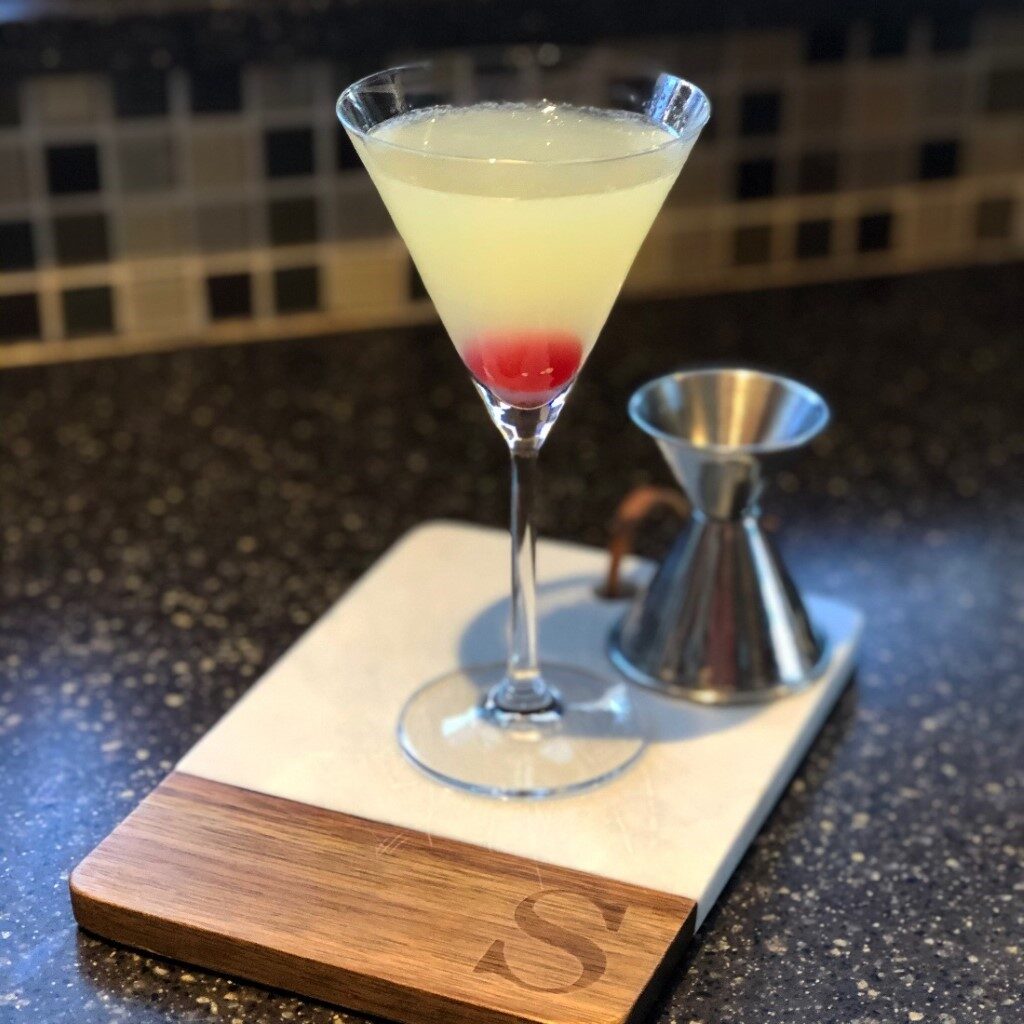
- Corpse Reviver #2 (Cocktail)
So I have been waiting all Dry-January to make this cocktail. The Corpse Reviver series of drinks were conceived of as a morning after – hair of the dog – refresher cocktail. It seemed funny that I could use it to revive my cocktail habit. However, at the last minute I was invited to an Amaro tasting last night and after, the group rolled right into an informal bourbon and then a rye tasting and things may have gotten a little out of control. So, let’s just say that the Corpse Reviver was used as intended today.
As mentioned in past posts, the cocktail was invented as a medicinal morning drink to deal with a hangover (AotC-40). The first mention of the Corpse Reviver is in 1861 in London’s Punch magazine. The first recipe is listed in the ‘Gentleman’s Table Guide’, by E. Ricket and C. Thomas printed in 1871. The Corpse Reviver No. 2 is the most famous of the series, and it is an excellent cocktail. It dates to 1930 and was included in Harry Craddock’s ‘Savoy Cocktail Book’. “To be taken before 11:00am, or whenever steam and energy are needed” Craddock writes. But he adds, “Four of these taken in swift succession with quickly unrevive the corpse again”. Well said.
These are my top twelve, but honestly my first cut was 25 top shelf drinks. I feel like I need to also acknowledge several really amazing Honorable Mentions too; London Calling (Cocktail), Highball Mizuwari (Highball), Light and Day (Cocktail), Porn Star Martini (Mixed Drink), Between the Sheets (Cocktail), an Old Cuban (Daiquiri)
Cheers!
AotCB-018
Instagram@architecture_of_the_cocktail
Previously in Architecture of the Cocktail:
Architecture of the Cocktail: Ten Things You Probably Didn’t Know About Bourbon, by Bill Stott
Architecture of the Cocktail: The True Story of Jack Daniel’s Whiskey, by Bill Stott
Architecture of the Cocktail: World Whisky Day. A Brief History of Whisk(e)y?, by Bill Stott
Architecture of the Cocktail: The Japanese Whisky and the Highball, by Bill Stott
Architecture of the Cocktail: The Delicious Dozen, by Bill Stott
Architecture of the Cocktail: What makes a cocktail, a cocktail? by Bill Stott
